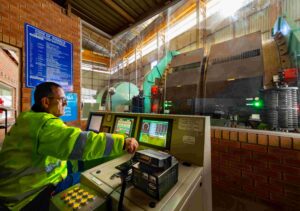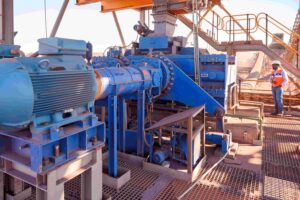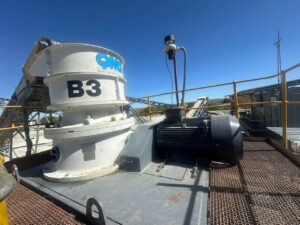The North American concrete industry today faces the critical challenge of lowering its carbon footprint. Globally, the sector is responsible for 8% of anthropogenic carbon emissions – almost wholly the result of the manufacture of the Portland cement that is commonly used to bind together the constituent materials in concrete.
Manufacturers of Supplementary Cementitious Materials (SCMs), which can displace a large portion of the Portland cement typically used in concrete while emitting significantly lower carbon emissions, thus have a tremendous market opportunity. While fresh ash production from coal plants is in decline, vast supplies of non-traditional SCMs, such as landfilled ash, bottom ash, and natural pozzolans, can and are being used to produce lower-carbon concrete.
ASTM International is updating its standards to encourage the use of these SCMs in concrete, while carbon-offset markets, such as the new US Low-Carbon Cement Protocol, provide the means for expanded investment in these products and associated technologies.
The above is a central piece of discussion at the upcoming Cementitious Materials International Technical and Trade Congress – a cornerstone for professionals in the construction and cement industry, focusing on sustainable cementitious materials such as ashes, slags, clays, fumes, pozzolana, and innovative building materials derived from construction debris and demolition waste (Casablanca, Morocco, April 18 and 19, 2024). The congress will feature discussions on the latest in green building methods, sustainable practices, and innovative research, making it an essential gathering for anyone interested in the advancement of sustainable construction.
Grant Quasha, Chairman and CEO, Eco Material Technologies, says, “This is a pivotal moment for the concrete construction market. As climate concerns grow more acute, governments, manufacturers, investors, builders and customers alike are demanding lower-carbon building materials. While technologies such as carbon capture offer promise in the future, the use of supplementary cementitious materials are a proven means of lowering the CO2 emissions associated with cement production—the largest source of carbon emissions in the manufacture of concrete – today.
“There is no silver bullet to reducing the concrete sector’s carbon footprint – all potentially viable processes, technologies and cementitious materials should be investigated. And that is what Eco Material Technologies is doing. While we recycle 7-million tonnes of coal ash per year, we also have plants in production and under construction that can produce over 4 million tons annually of sustainable, novel SCMs – harvested ash, natural pozzolans, and green cement products—that can reduce the carbon intensity of our nation’s concrete infrastructure at significant scale and a reasonable cost.”
Beatrice Ene, MD, Industry Link, says, “We prioritise the use of what used to be called and regarded as waste as the raw materials of tomorrow. Anticipating a scarcity of supply in various geographies is the main trigger of a global event that treats cementitious materials as a priority. This is why we are organising a forum to debate and find the best solutions for suppliers and producers for these very important resources. Looking at the North American market is essential in getting a complete view on the availability and use of SCMs.”
The congress is offering professionals from the industry a unique platform for sharing insights, innovative research and discussing future sustainable construction trends.






